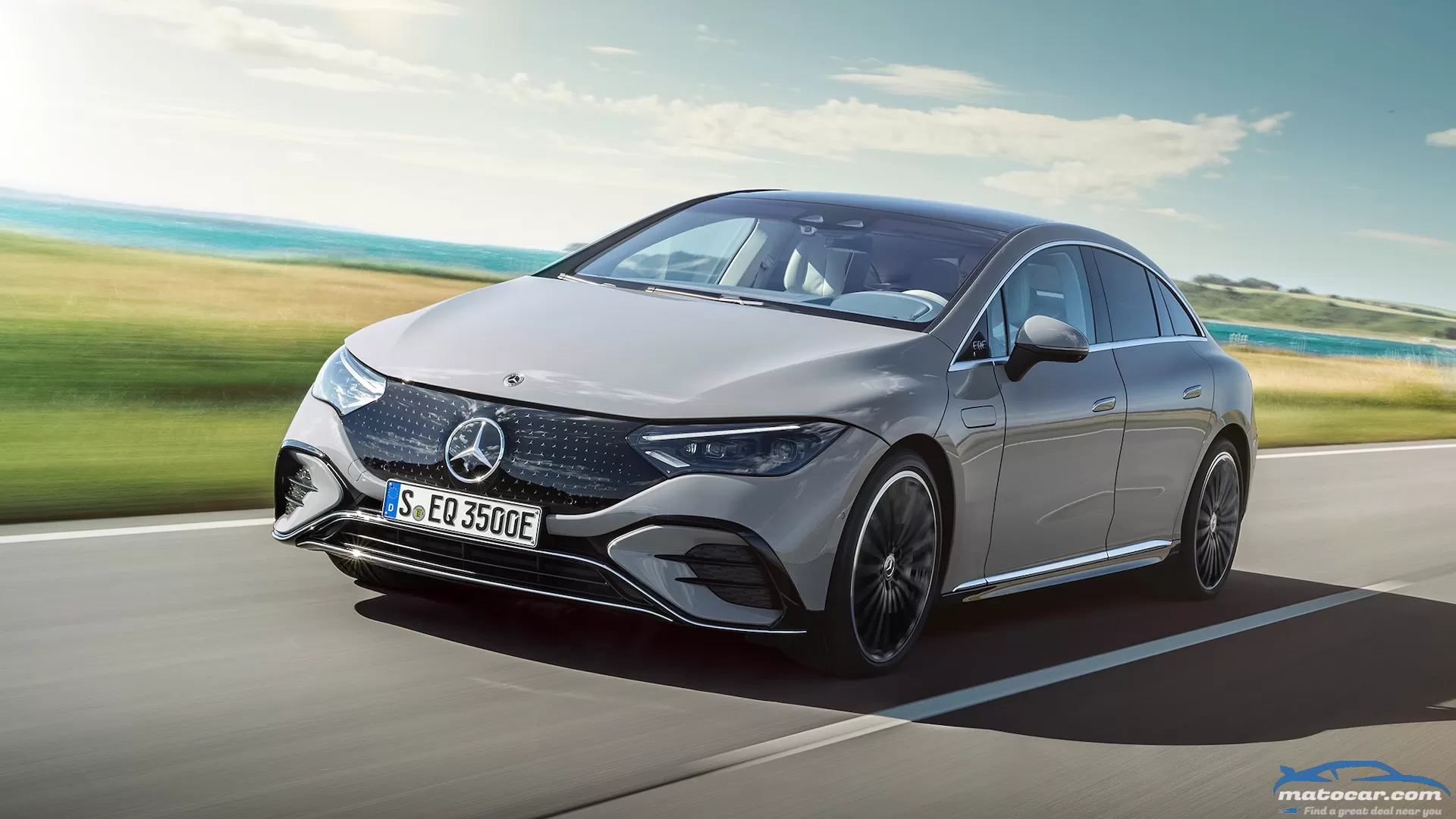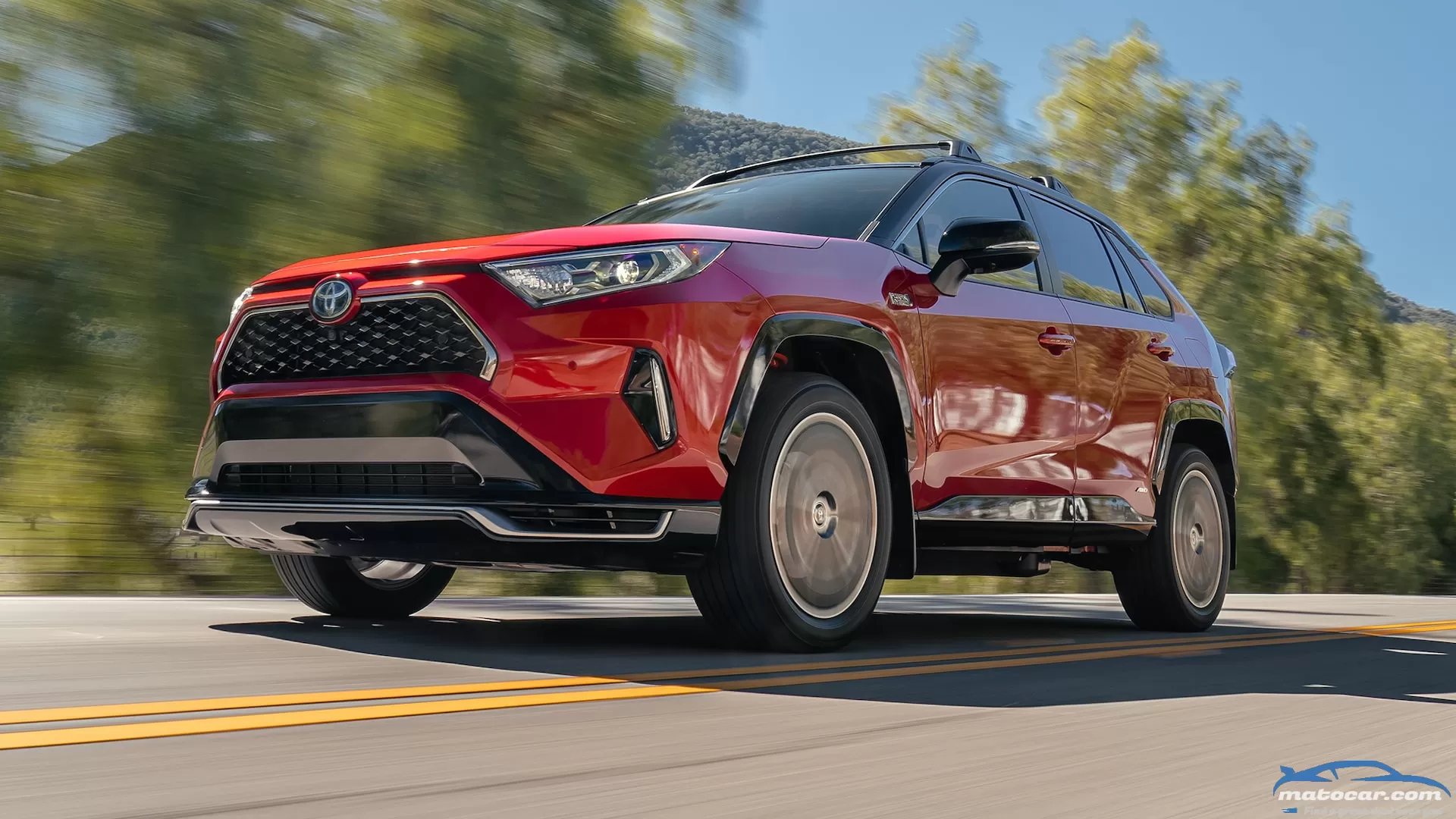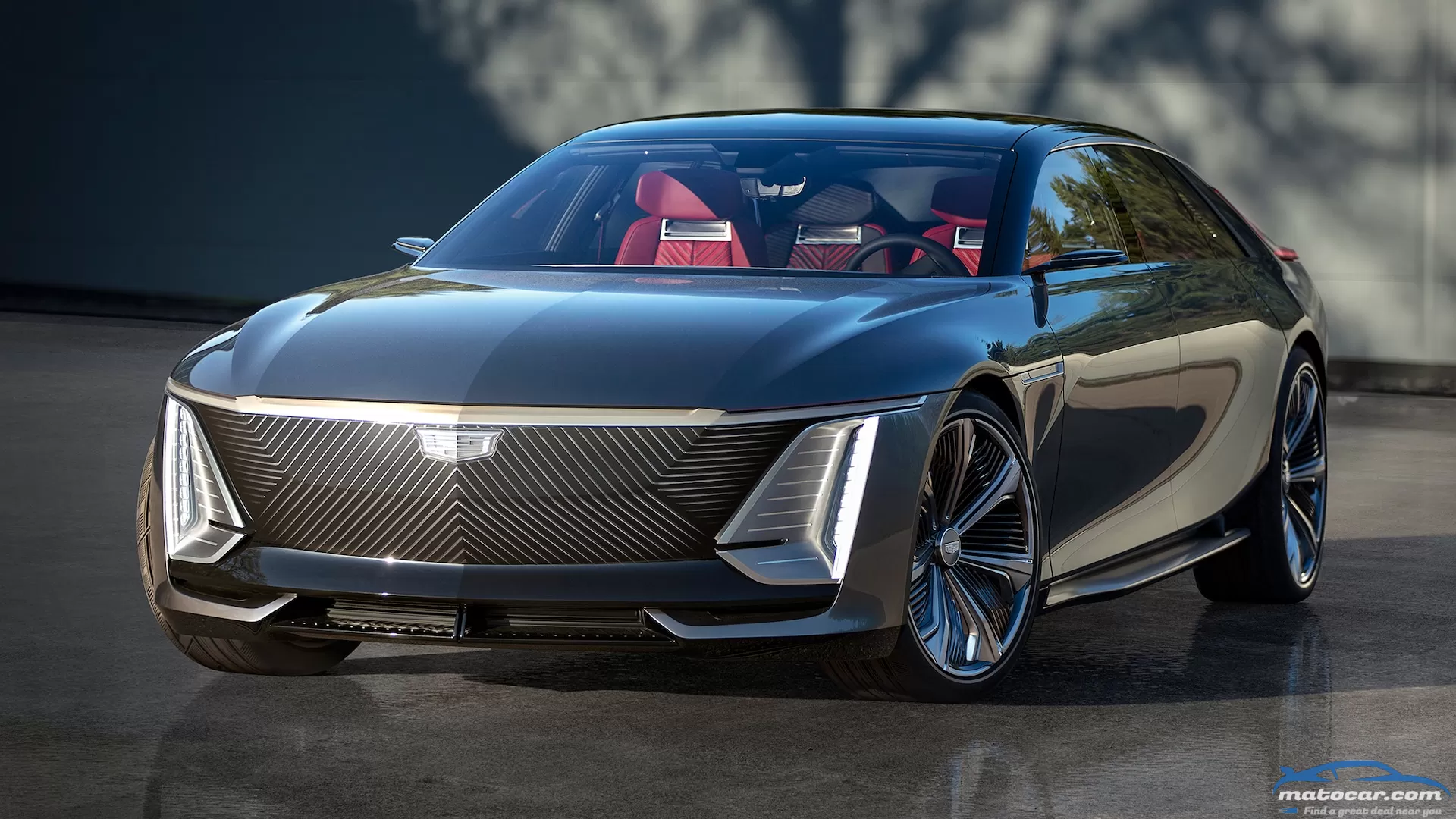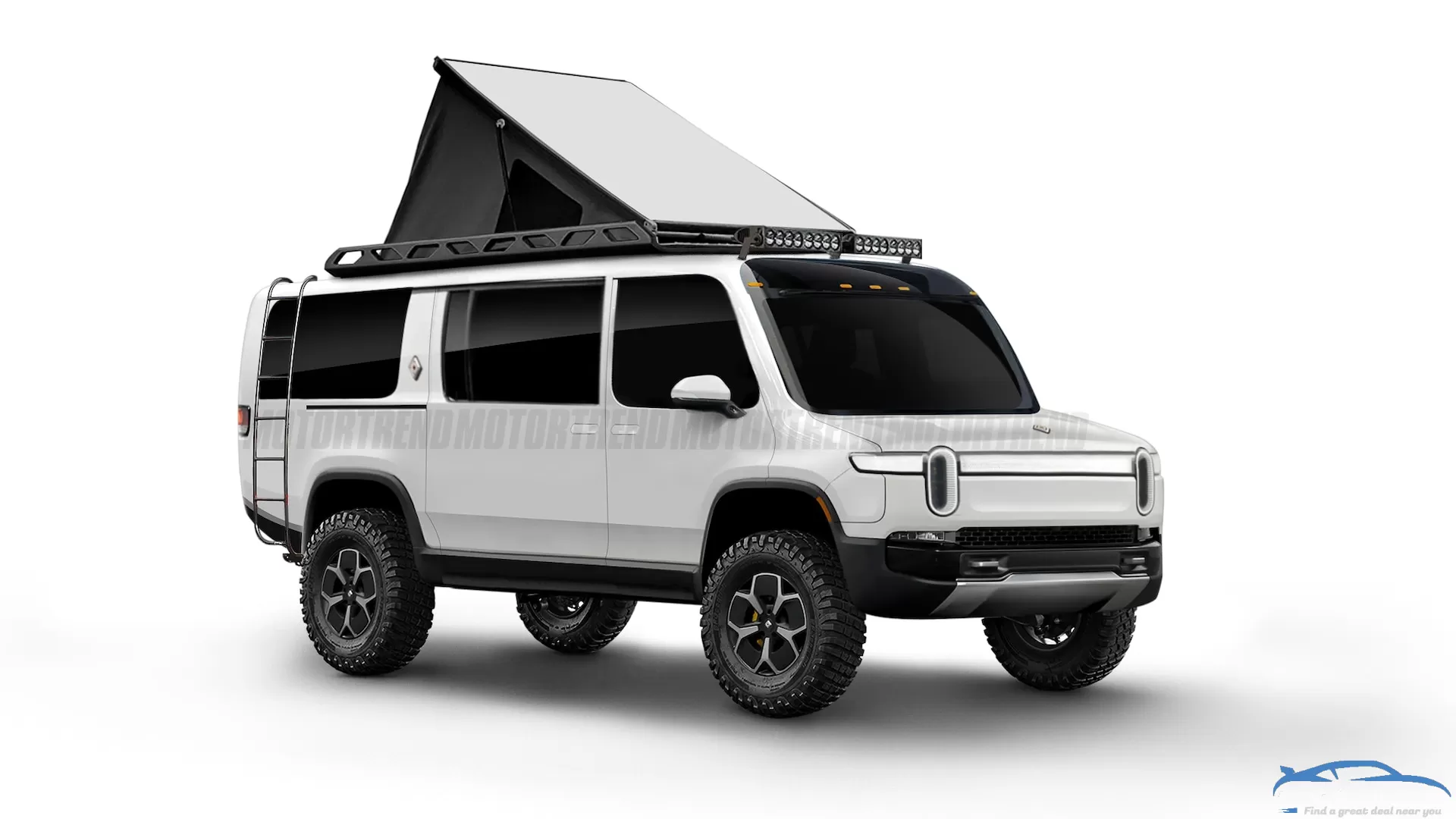2023 Mercedes-Benz EQE First Ride: Can This Replace the E-Class?

Solid and dependable, comfortably composed on any road at any speed, sometimes conservatively styled yet always unmistakably premium, the Mercedes-Benz E-Class sedan has for decades been the car whose core values have defined the Mercedes brand. But not for much longer. Mercedes-Benz's dramatic pivot to focus almost entirely on electric vehicles means there is no new E-Class under development in Stuttgart. Instead, its role as the company's touchstone is being handed to the new, all-electric Mercedes-EQ EQE.
Think of it as a heart transplant for the three-pointed star.
What Is the EQE?
The EQE is the smaller sibling of the new EQS sedan, built on a slightly compacted version of the same EVA2 electric architecture. At 196.7 inches, the EQE is 10.6 inches shorter overall than the EQS, but, significantly, its 122.8-inch wheelbase is only 3.6 inches shorter. It has the same swoopy one-box profile as the EQS—at 59.6 inches its overall height is the same—but with the wheels pulled farther to the corners of the car, it has a chunkier stance.
The more compact dimensions mean the EQE will only be available with the smaller 10-cell, 91-kWh battery pack. (The EQS is available with a 12-cell, 108-kWh battery.) Even so, Mercedes says in its most efficient specification—single motor, rear drive on steel springs and 19-inch wheels—the EQE has a WLTP-certified 410-mile range. (Official EPA ranges are often 20 percent or more lower, but figure 300-plus miles in any event.) The car can handle fast-charge rates up to 170 kW, which means up to 36 kWh, enough for 155 miles on the WTLP standard, can be added to the battery in just 15 minutes.
The EQE also shares much of the technology available on the EQS. The massive Hyperscreen is available as an option, along with air suspension and rear-wheel steering, which pivots the wheels either 10 degrees or 4.5 degrees depending on the wheel/tire package. Speaking of which, the entry-level wheel is a 19-incher, with 20s or 21s available, though selecting those will trim the range by about 5 percent. What you won't be able to get on the EQE—for now, at least—is the Level 3 autonomous Drive Pilot system that made its debut on the new S-Class and is now available on the EQS.
Although the EQE looks a lot like the EQS, it's not just a Shrinky Dinks version of the bigger car. Apart from its proportions, the front end is subtly different with its own headlight graphics. And unlike the EQS, which is a hatchback, the EQE has a conventional trunk. The reason, says EVA2 vehicle development chief Holger Enzmann, who's driving me around Stuttgart in a pre-production EQE350+, is to improve rear headroom by eliminating the need to package the hatch's hinges in the roof.
I try the rear seat at a stop. Although it feels cozier than an E-Class', there's plenty of leg- and knee room, and the H-points on the front and rear seats are 3.2 inches farther apart than in the E-Class. There's also more than an inch of clearance (I'm 6-foot-2) between my head and the optional glass roof fitted to the car. The rear seat also simply looks smaller than the E-Class', particularly in the squab, but Enzmann says the shoulder room is the same. You do have to duck under the header rail to get in and out, however, and the view through the dramatically sloping rear backlight is like looking out of a mailbox.
The Ride Stuff: Our Impressions
The white EQE350+ Enzmann is driving has a single 288-hp, 391-lb-ft electric motor driving the rear wheels. It feels brisk enough when he punches it to merge onto the autobahn, despite the EQE's 5,300-pound mass. More powerful versions such as the dual-motor, all-wheel-drive model are coming, and there'll be an AMG EQE with about 670 horsepower. Think of the EQE350+ as analogous to the entry-level E350 sedan, though Enzmann's brought along a well-optioned car, fitted with the Hyperscreen, a glass roof, the 10-degree rear steering system, air suspension, and an AMG Line appearance package, which includes a slightly more aggressive-looking front fascia and 20-inch wheels.
From the front passenger seat, at least, the EQE hews closely to traditional E-Class values. With the battery under the floor, the front seating position is 2.6 inches higher than in an E-Class, and there's just over an inch more shoulder room. It feels spacious.
You expect an electric car to be smooth and quiet, but the air-suspended EQE rides beautifully and is eerily silent, with nary a hint of a whine from the six-phase permanently excited synchronous electric motor or any harmonics from the 255/40 Pirelli SottoZero winter tires. "An internal combustion engine masks all sorts of noise," Enzmann says, "but in an EV there's nowhere to hide." The noise-suppression features include isolating both the motor and the inverter and control electronics, which are packaged in a special sandwich sheet steel with a plastic central layer.
We'll wait until we get to drive and test one on roads we know, but first impressions suggest the EQE350+ with air suspension is a benchmark midsize luxury EV in terms of ride and refinement. It makes a Tesla Model S feel like an antique.
In case you don't want to waft along in near silence, the EQE offers three sound experiences, artificial noisescapes piped through the audio speakers that rise and fall in concert with speed and acceleration, their intensity linked to whether you're driving in Eco, Comfort, or Sport modes. Silver Wave is a sort of gentle ambient sound, Vivid Flux is a robotic electronic noise, and Roaring Pulse sounds like someone trying to suffocate an AMG GT Black Series under a giant pillow. Quite why you'd want any of them, I don't know, but they're there. And if that's not enough interior entertainment, you can also select an ambient lighting mode that also responds to speed and acceleration.
The aforementioned drive modes change the same sorts of things as in the regular E-Class, with Individual mode allowing drivers to mix and match accelerator mapping, suspension settings, steering weighting, and traction and stability settings as they desire.
The Verdict—So Far
First impression: The EQE is the E-Class electrified. No, the interior package is not the same—though roomier up front and with more rear legroom—as that sloping roofline makes the rear seats feel slightly more cramped. But the EQE350+ feels to have the same overall demeanor of the three-pointed star's touchstone car. And that's a good thing.
But the E-Class, of course, is more than just a sedan. One in three E-Classes sold in Europe last year was a wagon, and in Germany wagons accounted for 50 percent of E volume. And then there is the E-Class Coupe and its Cabriolet cousin, both still solid sellers. Do they simply go away when production of the internal combustion E-Class finally ends?
Enzmann demurs, then hints EQ versions of those models are likely to appear toward the end of this decade, when the EVA2 architecture is superseded by the new MB.EA architecture under development in Stuttgart.
An AMG EQE wagon? Sign us up.
Looks good! More details?2023 Mercedes-EQ EQE 350+ Specifications PRICE $57,000 (est) LAYOUT Rear-motor, RWD, 5-pass, 4-door sedan ENGINE 288-hp/391-lb-ft permanent-magnet electric TRANSMISSION 1-speed automatic CURB WEIGHT 5,300lb (MT est) WHEELBASE 122.8 in L x W x H 196.7 x 77.2 x 59.6 in 0-60 MPH 6.5 sec (MT est) EPA FUEL ECON, CITY/HWY/COMB Not yet rated EPA RANGE, COMB 339 miles (est) ON SALE 2023 Show AllYou may also like
With SUVs increasingly becoming the default choice for single-car families across the U.S., automakers are working hard to make them more fuel efficient. Last year's 20 most fuel-efficient SUVs averaged an impressive 55.5 mpg combined; this year, the 20 most fuel-efficient SUVs bump up their combined average to 60.9 mpg. And that figure doesn't include the increasing availability of electric SUVs. Last year there were about nine SUV EVs on sale. This year? Seventeen and counting. Provided you're not ready to make the leap to an electric SUV (all of which would make this list), what follows are the 20 SUVs that achieve the best gas mileage on the market in 2022.But before we dig in, some quick housekeeping. Our list of the most fuel-efficient SUVs for the 2022 model year was gleaned using EPA test data, and all vehicles are ranked in order from 20 to 1 using their combined mpg/mpg-e figure. When we had a tie, we then factored in electric-only range (if applicable) and highway fuel economy to break it.Plug-in hybrid, hybrid, gas, and diesel SUVs were all eligible to make this list, but as you'll soon see, plug-in hybrid and hybrid SUVs dominate. As previously mentioned, the 17 electric SUVs on sale in the U.S as of this writing weren't included. In case you're curious, they are:Tesla Model Y (up to 129 mpg-e)Hyundai Kona Electric (120 mpg-e)Kia EV6 (up to 117 mpg-e)Chevrolet Bolt EUV (115 mpg-e)Hyundai Ioniq 5 (up to 114 mpg-e)Kia Niro EV (112 mpg-e)Tesla Model X (up to 105 mpg-e)Ford Mustang Mach-E (up to 101 mpg-e)Volkswagen ID4 (up to 99 mpg-e)Audi Q4 E-Tron (up to 95 mpg-e)Mazda MX-30 (92 mpg-e)Volvo C40 Recharge (87 mpg-e)Volvo XC40 Recharge (85 mpg-e)Audi E-Tron (up to 78 mpg-e)Jaguar I-Pace (76 mpg-e)Porsche Taycan Cross Turismo (up to 76 mpg-e)Rivian R1S (69 mpg-e)Without further ado, here are the 20 most fuel-efficient SUVs you can buy today, in order from worst to first.
Cadillac's New FaceHand AssemblyAluminum Spaceframe With Applied Panels Four First-Class Eames ChairsTheatrical Red With Ombre ShadingCoffee-Tanned Leather, Pillar-to-Pillar Screen.Return of the GoddessHow Much of This Will Make Production?When, How, and How Much?2024 Cadillac Celestiq Specifications BASE PRICE $300,000 (est) LAYOUT Front- and rear-motor, AWD, 4-pass, 4-door hatchback MOTORS 2 x 315-hp/400-lb-ft (est) AC, permanent-magnet electric TRANSMISSIONS 1-speed auto CURB WEIGHT 6,000 lb (est) WHEELBASE 120.0 in (est) L x W x H 210.5 x 79.7 x 57.5 in (est) 0-60 MPH 4.5 sec (MT est) EPA FUEL ECON Not yet rated EPA RANGE, COMB 300 miles (est) ON SALE Early 2024 Show All
WHAT IT IS: Despite #vanlife completely dominating our Instagram algorithms for a spell, no automaker has yet delivered a factory-ready overlanding camper van. That'll change with the release of the Rivian Adventure Van, which our illustration attempts to bring to life. Basically conceived as the progeny of a Rivian R1T and a Sportsmobile Ford Econoline, the Rivian Adventure Van (the name may change; R1V has a nice ring to it, no?) aims to live up to Rivian's philosophy of "keeping the world adventurous forever." The Adventure Van will be an R1-based electric off-roader, with clever features like Rivian's camp kitchen, and likely the ability to convert its seats into beds—allowing for days of off-the-grid living.WHY IT MATTERS: With most automakers just now waking up to the amount of money to be made by investing in the overland craze, the Rivian Adventure Van would take things a step further by creating the only OEM off-road-capable adventure van on the market. The Adventure Van would harken back to the days when you could roll into your local Volkswagen or Toyota dealer and leave with a Westfalia or Chinook.PLATFORM AND POWERTRAIN: Although Rivian could conceivably build the Adventure Van from its commercial-oriented Prime Van or RCV, we believe it'll instead use the more off-road-capable platform under the R1T pickup and R1S SUV. Hard details from our sources are scarce, as it's still early days for the Adventure Van, but we believe it will be available with multiple battery and motor options and come standard with the company's trick hydropneumatic suspension. We suspect both dual- and quad-motor powertrains will be available, with as much as 1,200 hp and 1,200 lb-ft on tap, and Rivian's 180-kWh Max battery pack.ESTIMATED PRICE: $125,000EXPECTED ON-SALE DATE: Q4 2025 at the earliest—Rivian has a lot of irons in the fire; the niche Adventure Van is likely a lower priority.




0 Comments